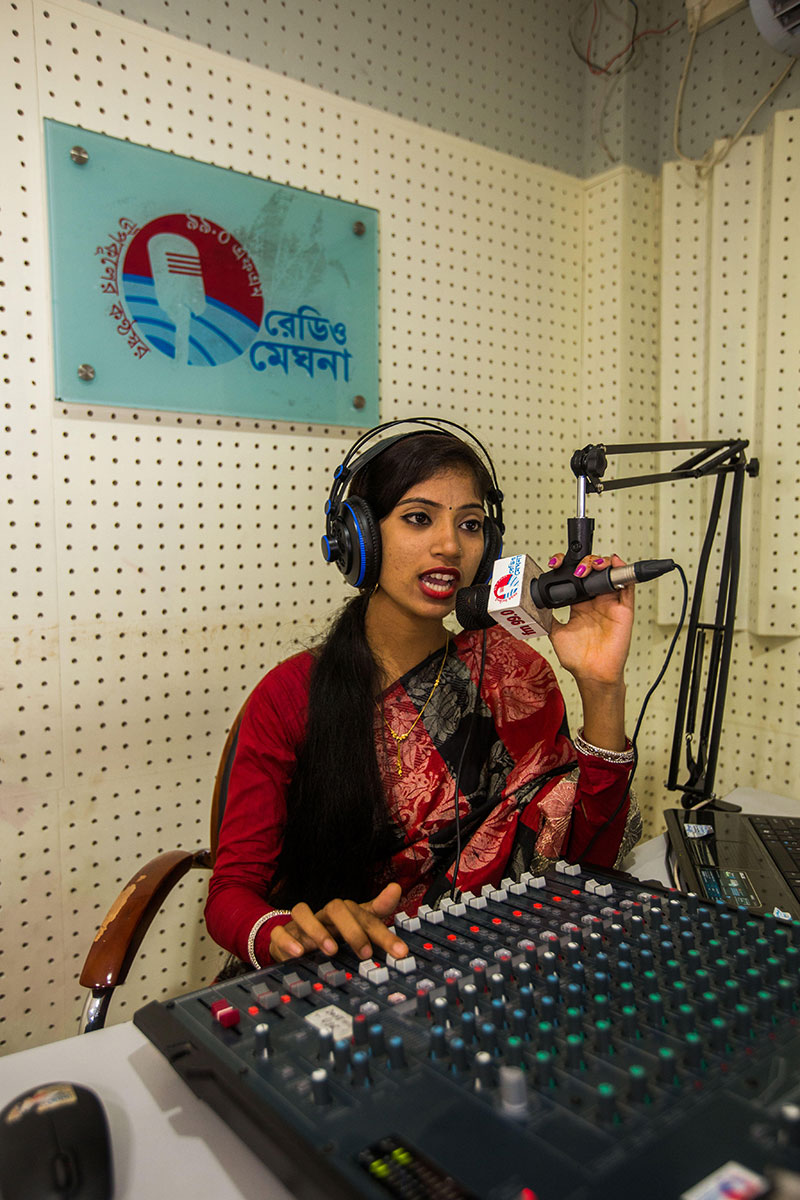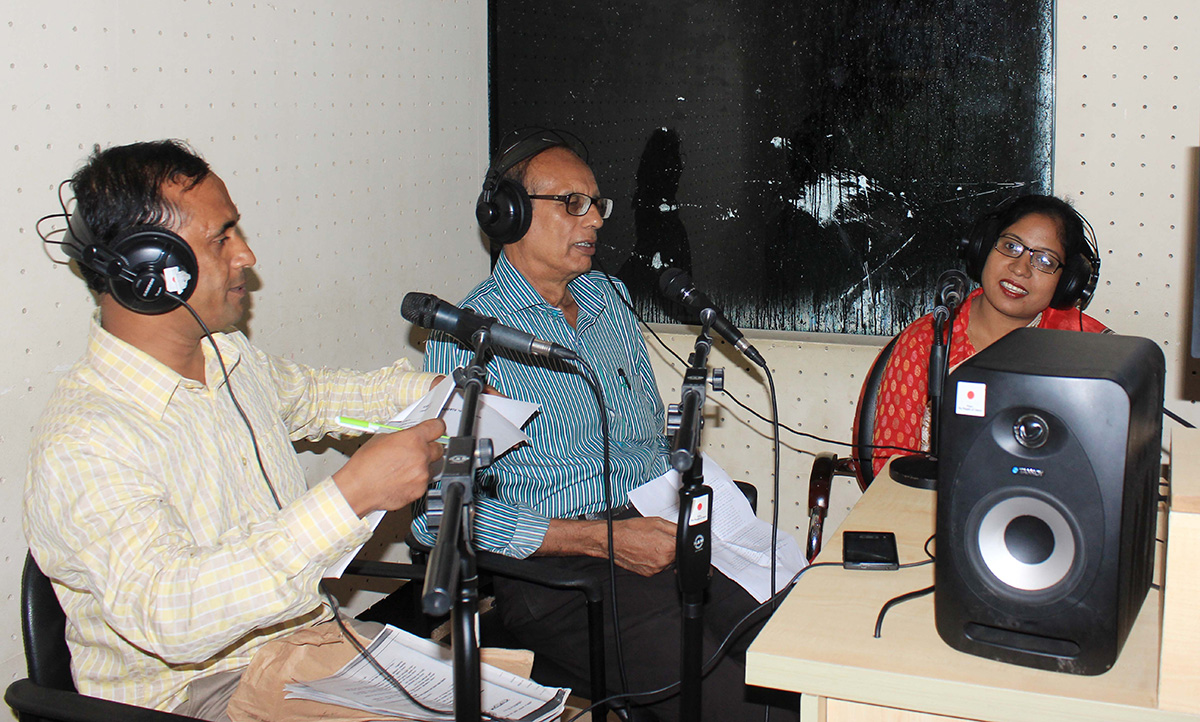7: ICT Applications: Benefit in all aspects of life in line with e-environment
Climate Justice Project Summary
About 25% of total population of Bangladesh live in the coastal belt of the country. Despite having the potential to accelerate growth, the coastal belt of Bangladesh is one of the depressed, if not neglected, regions of the country. The backwardness of the region is creating inter-regional imbalance, causing confusion and frustration among the population living in this vibrant but volatile region. Bangladesh is one of the most badly affected countries by climate change, as it has been [forecasted by the IPCC (International Panel of Climate Change). IPCC AR1 predicted that 1-meter rise in sea level will inundate 17 % of the coastal land. It is said that there are only 5 to 10 % of world cyclones happen in this area but causes 80 % of the world cyclone damages. Increase salinity in drinking water and ban on fishing for a certain period of the year are another big challenge for people living in the coastal area.
Part 2: Project Information
Project Duration: April 2018 to March 2021.
Implementing Partners:
Eight Community Radio Station situated in coastal areas of Bangladesh. Those are Community Radio Nalta, Community Radio Lokobetar, Community Radio Sagor Giri, Community Rural Radio Krishi, Community Radio Sundarban, Community Radio Naf, Community Radio Meghna, and Community Radio Sagor Dwip.
Also, the Amateur Radio Clubs in Chittagong, Bhola, Hatiya, Cox’s Bazar, Kutubdia, and Bagerhat
Donor: COAST Trust Bangladesh.
Link with SDGs: This project is being contributing to SDGs 03 and 13 i.e. Ensure healthy lives and promote well-being for all at all ages (03) and Take urgent action to combat climate change and its impacts (13). The project is addressing ICT Applications: Benefit in all aspects of life in line with e-environment. The motivational campaign are available in online- Facebook, Facebook live, YouTube, Cell Phone SMS; and offline- Training, courtyard meeting, community dialogues, etc.
About BNNRC:
Bangladesh NGOs Network for Radio and Communication (BNNRC) is committed to promoting access to the community media for rural people in Bangladesh. BNNRC is enabling people to establish and develop community-based communications media for empowerment, cultural expression, education, information and entertainment in line with voices for the voiceless. Bangladesh NGOs Network for Radio and Communication represents the community media sector to Government, Industry, Regulatory Bodies, Media and Development Partners.
BNNRC is utilizing the power of community radio and communication to help reduce poverty and support community people in understanding their rights in respect to Empower People (Increasing effective political participation through multi-generation reach), Creates Space (Developing a more inclusive public space through multi-platform and multi-generation reach) and Influencing Power (Improving responsive from power holders through providing access to ICT and media production skills; and support to increase the ability of the sector to respond to the needs of rural disadvantaged communities.
Basic Information about your entity
More than a third of the country’s population (some 50 million people) live in coastal areas. Many are in rural areas where radio is the main medium of information. Broadcasting in the local dialect of Bengali is particularly effective. It allows to reach communities with timely information where and when they need it most. Till now the government has issued licenses to 17 community stations, including eight in cyclone-prone coastal areas. Although still in its infancy, community radio offers more than 147 programming hours a day including weather forecasts, news, entertainment, and community talk shows. As per the government’s Standing Orders on Disaster, when a signal number four is issued, a control room is set up by BNNRC as a bridge between the community radio stations and disaster response authorities such as the Bangladesh Meteorological Department (BMD).


Pre-disaster, early warning messages issued by the BMD and interviews of local government representatives (such as the deputy commissioner and the Upazila Nirbahi officer) and of cyclone preparedness program officials are broadcast. A cyclone signal number 5-7 means television is not an option anymore as the power grid is down by then. At this time, community radio is the only hope. On radio, only Bangladesh Betar (the national radio) and community radios are available for affected communities. The latter’s focus on disaster preparedness makes it crucial in helping people in affected areas prepare for the cyclone. At cyclone signal number 8-10, disaster management programs run almost continuously, with the community radio stations depending on generators for uninterrupted electricity supply. As long as their phones are charged, people have a channel of information open to them by community radio stations.
At the time of disaster when power grid is down and all other communication medium get collapsed, Amateur Radio can play a vital role to communicate with others to get the proper disaster information and also rescue service.
Project’s description (Activity’s description)
Bangladesh NGOs Network for Radio & Communication (BNNRC) is being implementing a project titled, Family Planning in Bangladesh-Improving Quality & Community-led initiatives for climate justice and resilience in the islands and coastal areas of the Bay of Bengal in Bangladesh Access” with the partnership of 8 Community Radio Stations and 6 Amateur Radio Clubs where people living in a very vulnerable state due to climate change. People living in those areas are most affected people due to global warming and other natural calamities. The goal and objectives of the project are as follows:
Goal:
Strengthening capacity of Community Radio Stations and Amateur Radio Clubs in the coastal belt of Bangladesh along with facilitating information and education as empowerment through community media especially tailoring the need of adolescent, youth, women, children and help to cope with climate change.
Objectives:
- To increase and improve knowledge of community women and men including adolescent and young adults on sexual reproductive health rights (SRHR), climate change, disaster risk reduction (DRR) and cyclone preparedness through community radio programs
- To ensure Right to Information for people living hard to reach the area in the coastal belt.
- To build the capacity of Community Radio Station Managers, Program Producers, and Broadcasters, in their ability to communicate and facilitate the impact of climate change on the people living on coastal belt.
- Built and strengthening the network of Amateur Radio by the formation of Amateur Radio Clubs in the coastal belt.
Expected Outcomes:
- Reduce maternal mortality rate and ensure clients access to available family planning services.
- Improve reproductive choices and reduce unsafe abortion,
- Women are able to get access to effective FP and safe MR services, and high-quality PAC
- Build capacity of existing healthcare system to provide safe services;
- Enabling regulatory and policy environment around sexual and reproductive health care.
Highlights of the Project’s partnership activities
- Set up a new Community Radio Station in Swandip (Chittagong) and provide all technical support to run that.
- Capacity strengthening of the staffs of new Community Radio Station by arranging meetings.
- Built strong Amateur Radio network in the coastal belt and formation of 6 Amateur Radio Clubs in Cox’s Bazar, Chittagong, Bhola, Hatiya (Noakhali), Kutubdia (Cox’s Bazar) and Bagerhat by providing equipment and training.
- To help/assist and capacity building of 8 community radio stations (CRSs) in the coastal belt on program planning, designing and broadcasting programs on climate change and the process of adaptation with it by arranging coordination meetings and producing a booklet on those issues.
- Raise awareness among the populace of the coastal belt on SRHR, violence against women (VAW), cyclone preparedness and disaster risk reduction through 8 Community Radios and 6 Amateur Radio Clubs.
Project’s future perspectives
- Community awareness on DRR, Climate adaptations, protecting adolescent, youth women and children raised in the islands and in the vicinity of CRSs.
- Violence against women will be reduced.
- Adolescent dropout from school and child marriage will be reduced.
- Adolescent, youth and women empowerment will be visible and they will take part in the decision-making process in families as well as in the community.
- Amateur radio/wireless network will be active during disaster period for emergency communication while mobile networks will be failed.
- A network of adolescent and women will be activated as a dignified citizen having facilitated dialogue with policymakers in national level.
Relation with SDG 03
This project is being contributing to SDGs 03 and 13 i.e. Ensure healthy lives and promote well-being for all at all ages (03) and Take urgent action to combat climate change and its impacts (13).
A culture will be created to prevent child marriage, violence against women and also promote safe sexual and reproductive health. The marginalized people living in coastal area of Bangladesh will have access to information regarding sexual and reproductive health care is crucial to the health and well-being of women, children and adolescents and will be able to stop child marriage and violence against women. Those people will also have vivid knowledge about disaster risk reduction and climate change adaptation through Community Radio Station and Amateur Radio Clubs.


